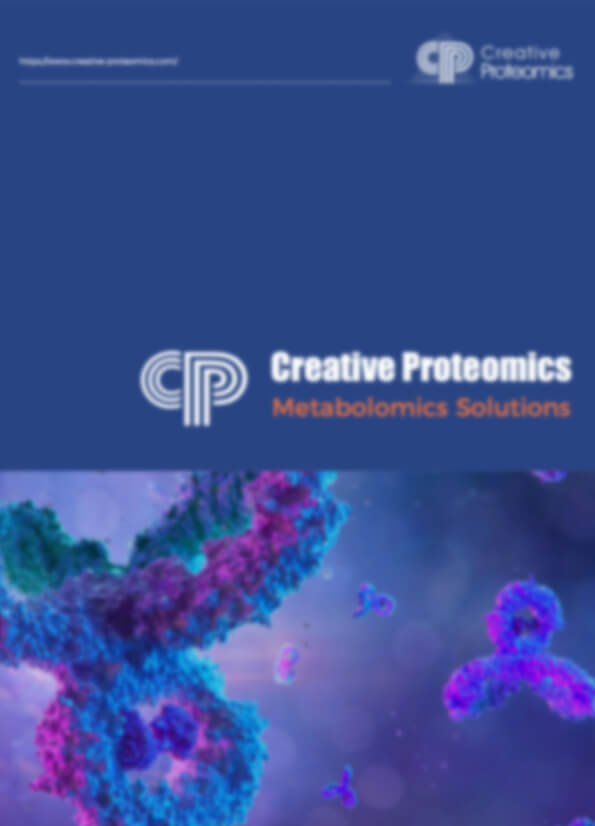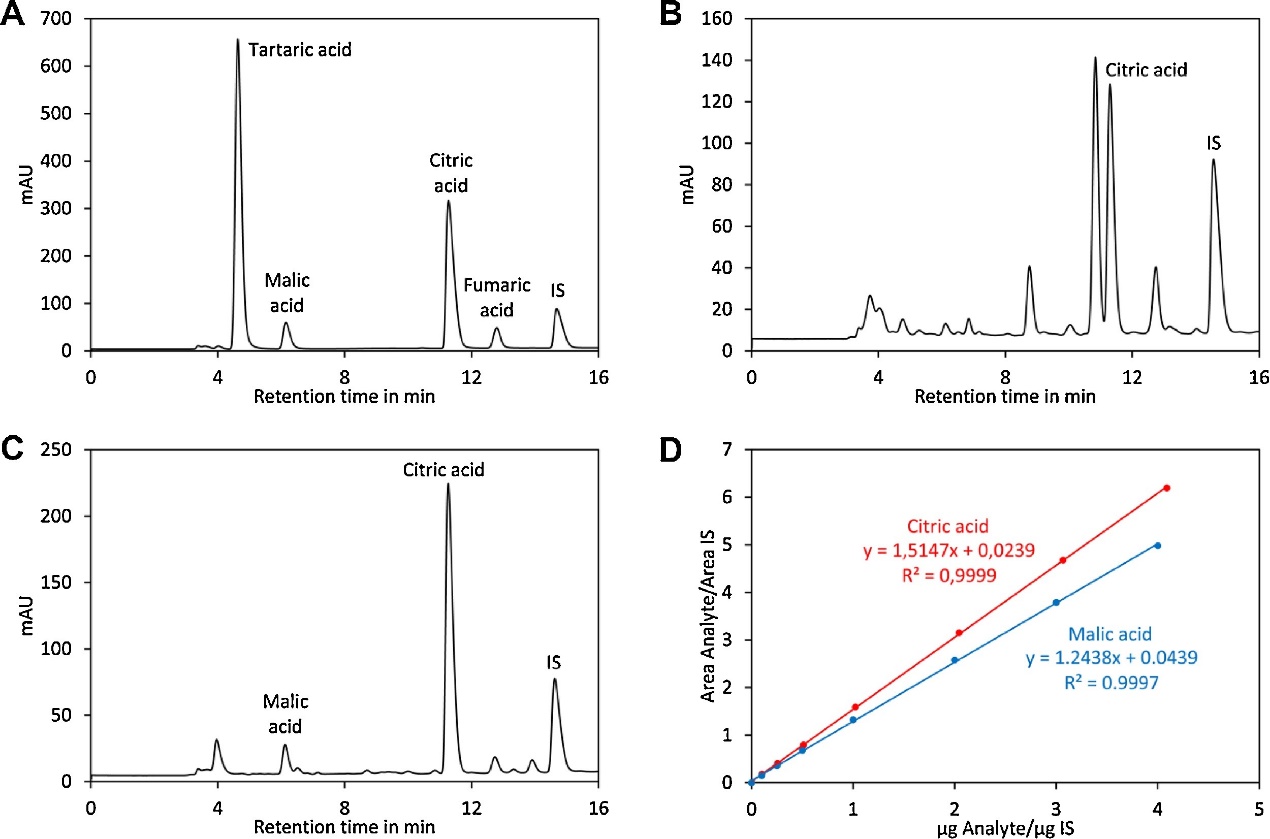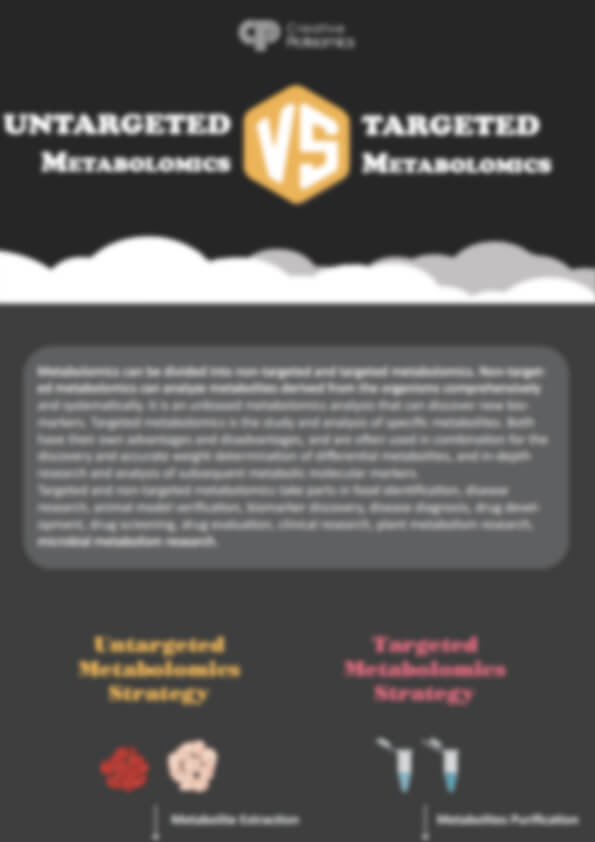Pyruvic Acid Analysis Service
Creative Proteomics specializes in high-precision pyruvic acid analysis using advanced LC-MS/MS and GC-MS technologies. We provide targeted metabolite quantification, metabolic pathway profiling, and isotope tracing to support biomedical research, drug development. Our services help scientists analyze metabolic flux, assess redox balance, and uncover disease biomarkers with high accuracy and fast turnaround times.
Submit Your Request Now
×- What We Provide
- Advantages
- Technology Platform
- Sample Requirements
- FAQ
- Publications
What is Pyruvic Acid?
Pyruvic acid (2-oxopropanoic acid, C₃H₄O₃) is a key metabolic intermediate in glycolysis, where it forms as the end product of glucose breakdown. It serves as a crucial link between carbohydrate, fat, and protein metabolism. Under aerobic conditions, pyruvate converts to acetyl-CoA for ATP production via the TCA cycle, while under anaerobic conditions, it is reduced to lactate or converted to ethanol in microorganisms. Beyond energy production, pyruvic acid is a precursor for amino acids, fatty acids, and other biomolecules. Its metabolic importance makes it valuable in pharmaceuticals, food, agriculture, and biomedical research.
Pyruvic Acid Analysis Service Offered by Creative Proteomics
Targeted Pyruvic Acid Quantification – Absolute quantification using LC-MS/MS with isotope-labeled internal standards for high specificity and accuracy.
Metabolic Pathway Profiling – Simultaneous detection of pyruvate, lactate, acetyl-CoA, and other key glycolytic and TCA cycle intermediates.
Stable Isotope Tracing – ¹³C- and ²H-labeled pyruvate tracking to study metabolic flux in cells, tissues, and in vivo models.
Oxidative Stress and Redox Status Analysis – Pyruvate/lactate ratio determination to assess cellular redox balance and metabolic health.
Custom Panel Development – Tailored assay design for specific metabolic studies, drug testing, or disease research.
Data Interpretation & Bioinformatics Support – Advanced statistical analysis, pathway enrichment, and correlation studies to provide actionable insights.
Detectable Pyruvic Acid-Related Metabolites
| Metabolic Pathway | Detectable Analytes | Relevance to Pyruvate |
|---|---|---|
| Glycolysis | Glucose, Fructose-6-Phosphate, Glyceraldehyde-3-Phosphate (G3P), Phosphoenolpyruvate (PEP), ATP/ADP/AMP, Lactate | PEP directly converts to pyruvate; lactate is a key anaerobic product of pyruvate reduction. |
| Gluconeogenesis | Oxaloacetate, Malate, Phosphoenolpyruvate (PEP) | Pyruvate carboxylase converts pyruvate to oxaloacetate, initiating glucose synthesis. |
| TCA Cycle | Acetyl-CoA, Citrate, Isocitrate, α-Ketoglutarate, Succinyl-CoA, Succinate, Fumarate, Malate | Acetyl-CoA (derived from pyruvate) fuels the TCA cycle; malate and oxaloacetate replenish pyruvate pools. |
| Amino Acid Metabolism | Alanine, Glutamate, Aspartate, Valine, Leucine | Pyruvate transaminates to alanine; α-ketoglutarate (TCA intermediate) links to glutamate synthesis. |
| Lipid Synthesis | Malonyl-CoA, Acetyl-CoA, Palmitate | Pyruvate-derived acetyl-CoA is a precursor for fatty acid biosynthesis. |
| Ketone Body Formation | Acetoacetate, β-Hydroxybutyrate | Excess acetyl-CoA (from pyruvate) is diverted to ketogenesis under low glucose conditions. |
| Fermentation | Ethanol, Acetate, CO₂ | Pyruvate decarboxylation yields ethanol (yeast) or acetate (bacteria). |
| Antioxidant Pathways | Glutathione (GSH/GSSG), NADPH | Pyruvate enhances NADPH production via the pentose phosphate pathway, supporting redox balance. |
Advantages of Pyruvic Acid Assay
- High Sensitivity & Accuracy – Detects pyruvate and related metabolites at pM to nM levels with CV < 10% using LC-MS/MS.
- Comprehensive Metabolite Coverage – Simultaneous quantification of glycolysis, TCA cycle, and redox-related metabolites.
- Advanced Instrumentation – Utilizes QTRAP 6500+, Agilent 6495C and Agilent 7890B-5977A GC-MS for precise and reliable data.
- High Reproducibility – Ensures RSD < 15% with rigorous quality control and internal standards.
- Wide Sample Compatibility – Supports serum, plasma, urine, CSF, tissues, and cell culture media with minimal volume requirements.
- Fast Turnaround Time – Delivers results within 6-8 weeks, with priority processing available.
- Customizable & Data-Driven – Offers custom assay development, metabolic flux analysis, and bioinformatics interpretation.
Technology Platforms for Pyruvic Acid Analysis Service
- HPLC-UV System – Agilent 1260 Infinity II with UV detector (320 nm wavelength), validated for pyruvate quantification in biological samples
- Liquid Chromatography – Mass Spectrometry (LC-MS/MS) –Agilent 6495C Triple quadrupole mass spectrometer equipped with an electrospray ionization (ESI) source for high-specificity quantification.
- Gas Chromatography-Mass Spectrometry (GC-MS) – Agilent 7890B-5977A for stable isotope labeling studies and volatile metabolite detection.

Agilent 1260 Infinity II HPLC (Fig from Agilent)

Agilent 7890B-5977A (Figure from Agilent)

Agilent 6495C Triple quadrupole (Figure from Agilent)
Sample Requirements for Pyruvic Acid Analysis Service
| Sample Type | Required Volume/Amount | Collection Method | Storage Conditions | Additional Notes |
|---|---|---|---|---|
| Serum | ≥ 100 µL | Collect in a serum tube, centrifuge at 3000 × g for 10 min | Store at -80°C, avoid freeze-thaw cycles | Aliquot to minimize degradation |
| Plasma | ≥ 100 µL | Collect in EDTA/heparin tube, centrifuge at 3000 × g for 10 min | Store at -80°C, avoid freeze-thaw cycles | Specify anticoagulant used |
| Urine | ≥ 500 µL | Collect midstream in a sterile container | Store at -80°C, no preservatives | Avoid bacterial contamination |
| Cell Culture Media | ≥ 1 mL | Collect from conditioned media, centrifuge to remove debris | Store at -80°C, filter if necessary | Specify culture conditions |
| Tissue Samples | ≥ 50 mg | Flash-freeze in liquid nitrogen | Store at -80°C, avoid repeated freeze-thaw | Provide sample weight and species |
| Cerebrospinal Fluid (CSF) | ≥ 200 µL | Collect via lumbar puncture in a sterile tube | Store at -80°C, avoid contamination | Handle with extreme care |
| Whole Blood | ≥ 200 µL | Collect in EDTA/heparin tube | Store at -80°C, mix gently to prevent clotting | Avoid hemolysis |
Applications of Pyruvic Acid Assay Service
Metabolic Research
Investigate glycolysis, TCA cycle activity, and redox balance in biological systems.
Pharmaceutical & Drug Development
Study the effects of drugs on cellular energy metabolism, mitochondrial function, and metabolic diseases.
Nutritional & Dietary Studies
Analyze the effects of dietary methionine levels, methyl donors, and metabolic interventions on cellular metabolism.
Microbial & Industrial Biotechnology
Explore pyruvate metabolism in fermentation, biofuel production, and engineered microbes.
Environmental & Toxicology Studies
Evaluate metabolic responses to pollutants, toxins, and oxidative stress.
Agricultural & Plant Science
Study plant metabolism, stress adaptation, and crop improvement.
FAQ of Pyruvic Acid Analysis Service
What is the detection limit for pyruvate?
Our HPLC-UV (Agilent 1260 Infinity II) detects pyruvate within a range of 0.2–1.2 mmol/L. For trace-level analysis, LC-MS/MS (Sciex TripleTOF 6600) provides sub-nanomolar sensitivity.
Can you analyze pyruvate in complex matrices like fermented products or food?
Yes. Our LC-MS/MS platform integrates:
- Solid-phase extraction (SPE) to remove polysaccharides and pigments from fermentation broths.
- Enzymatic pretreatment (e.g., pyruvate dehydrogenase) for food samples (dairy, plant extracts).
- Matrix-matched calibration curves to correct for interference.
How do you validate result accuracy?
We employ rigorous quality controls:
- Internal standards: 13C-labeled pyruvate corrects for matrix effects.
- Spike-in recovery tests: Clients may request spike-in recovery tests for selected samples (acceptable range: 90–110%).
- Multi-platform cross-validation: Compare results from HPLC-UV, LC-MS/MS, and enzymatic assays.
Do you offer metabolic flux analysis for pyruvate?
Yes. Using 13C-isotope tracing, we quantify dynamic fluxes of pyruvate into:
- Acetyl-CoA (TCA cycle),
- Lactate (Warburg effect in cancer),
- Alanine (amino acid synthesis). This service is ideal for studying mitochondrial dysfunction or microbial fermentation efficiency.
Learn about other Q&A.
Pyruvic Acid Analysis Service Case Study
Publications
Here are some of the metabolomics-related papers published by our clients:

- A non-probiotic fermented soy product reduces total and ldl cholesterol: A randomized controlled crossover trial. 2021. https://doi.org/10.3390/nu13020535
- Resting natural killer cell homeostasis relies on tryptophan/NAD+ metabolism and HIF‐1α. 2023. https://doi.org/10.15252/embr.202256156
- Enhance trial: effects of NAD3® on hallmarks of aging and clinical endpoints of health in middle aged adults: a subset analysis focused on blood cell NAD+ concentrations and lipid metabolism. 2022. https://doi.org/10.3390/physiologia2010002
- Function and regulation of a steroidogenic CYP450 enzyme in the mitochondrion of Toxoplasma gondii. 2023. https://doi.org/10.1371/journal.ppat.1011566
Reference
- Oh, Songjin, et al. "Metabolomic Analysis of Amino Acid and Organic Acid Profiles in Tissue From Ovarian Cancer Patients Using High-Performance Liquid Chromatography-Tandem Mass Spectrometry (HPLC-MS/MS) and Gas Chromatography-Tandem Mass Spectrometry (GC-MS/MS)." Analytical Letters 58.4 (2025): 623-638. https://doi.org/10.1080/00032719.2024.2334097










